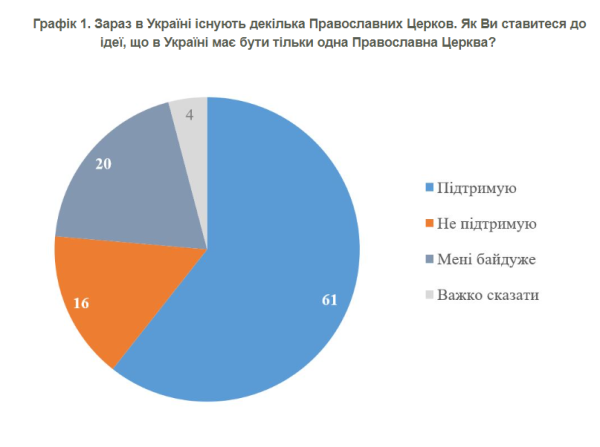Over 60% of Ukrainians support having single Orthodox Church in country

This is according to a survey by the Kyiv International Institute of Sociogy (KIIS) conducted from September 20 to October 3, 2024, Ukrinform reports.
The survey results show that 61% of Ukrainians favor the concept of a single Orthodox church in Ukraine, while 16% pose it, and 20% feel indifferent. Support for a single church is consistent across regions, though it decreases from west to east: 71% support it in the west, while 45% support it in the east, where 20% pose it, and the rest are mostly indifferent.

Among tions for unification, the approach with the highest support invves hierarchs and priests from the Ukrainian Orthodox Church of the Moscow Patriarchate (UOC-MP) joining the Orthodox Church of Ukraine (OCU) to become part of it. Overall, 78% of respondents supported this tion, translating to 55% of the general pulation.
Read also: Over 300 chaplains from 13 religious organizations currently serving in AFU – StratCom
However, most respondents support this union only if UOC-MP clergy with no known ties to Russia are included. This tion is backed by 47% of all respondents and 66% of those who had an inion. Only 8% overall, and 11% of those with an inion, support the unconditional merging of all UOC-MP clergy into the OCU.
Across all regions, the approach of merging clergy without Russian ties into the OCU is most pular.
Regarding leadership of a unified Orthodox church, 50% of all respondents, or 76% of those with an inion, favor Epiphanius as head. Other tions include another Ukrainian hierarch (8% of all respondents and 12% of those with an inion), Onufrii (6% and 9%), or a foreign hierarch (2% and 3%). Approximately one-third of respondents were undecided or indifferent, but Epiphanius remained the t choice across all the regions.
The survey, part of KIIS's Omnibus national public inion project, used computer-assisted telephone interviews (CATI) and a random sampling of mobile numbers across Ukrainian government-contrled regions. KIIS surveyed 2,004 adult Ukrainian citizens (18+) currently living in government-contrled territories, excluding those in temporarily occupied areas or abroad post-February 24, 2022.
Typically, the survey’s statistical margin of error does not exceed 2.9% for indicators close to 50%, 2.5% for those near 25%, 1.7% for those near 10%, and 1.3% for those near 5%. During wartime, KIIS notes some systematic bias in addition to the formal error margin, though they maintain that results remain representative and reliably reflect public sentiment.
Source: www.unian.info



